Back in August, wrestling superstar and car enthusiast John Cena surprised fans by revealing his ownership of a Lamborghini Diablo kit car. Now, this unique vehicle is up for auction, offering a fascinating glimpse into the world of celebrity car collecting and the sometimes-complicated realm of replica automobiles. This isn’t just any car; it’s a testament to dedication, taking Cena roughly twenty years to get it road-ready. And in a surprising turn, just as it’s completed, he’s decided to part ways with it, listing it on Bring a Trailer through Naples Motorsports in Florida.
This metallic blue beauty, gleaming with its iconic phone dial wheels, might fool the casual observer into thinking it’s a genuine Italian supercar. However, beneath the surface lies a story of custom builds, resourceful engineering, and the enduring appeal of the Lamborghini Diablo, even in replica form.
But what exactly is the story behind this “fake Lambo”? Where did it come from, and what makes it tick? Let’s delve into the details of John Cena’s Lamborghini Diablo replica and uncover the secrets of this intriguing machine.
Unveiling the Replica’s Origins: The NAERC Connection
When the news of John Cena’s Lamborghini Diablo replica first surfaced, automotive enthusiasts were eager to learn more about its history. Details were initially sparse, gleaned from a podcast interview where Cena mentioned owning a replica powered by a BMW V12 engine. Intrigued, many, including journalists at The Autopian, embarked on a quest to piece together the car’s backstory. Extensive research into online forums and archives pointed towards a likely origin: North American Exotic Replica Cars (NAERC).
And indeed, that research proved accurate. The listing by Naples Motorsports confirms that this John Cena “fake Lambo” is built upon a custom chassis from NAERC. According to the seller, “This car did not have a donor car but is a custom chassis offered by NAERC ( North American Exotic Replica Cars) who sold plans and kits that used BMW V-12 power.” The project reportedly began around 2003, marking the start of a lengthy journey to bring this Diablo vision to life.
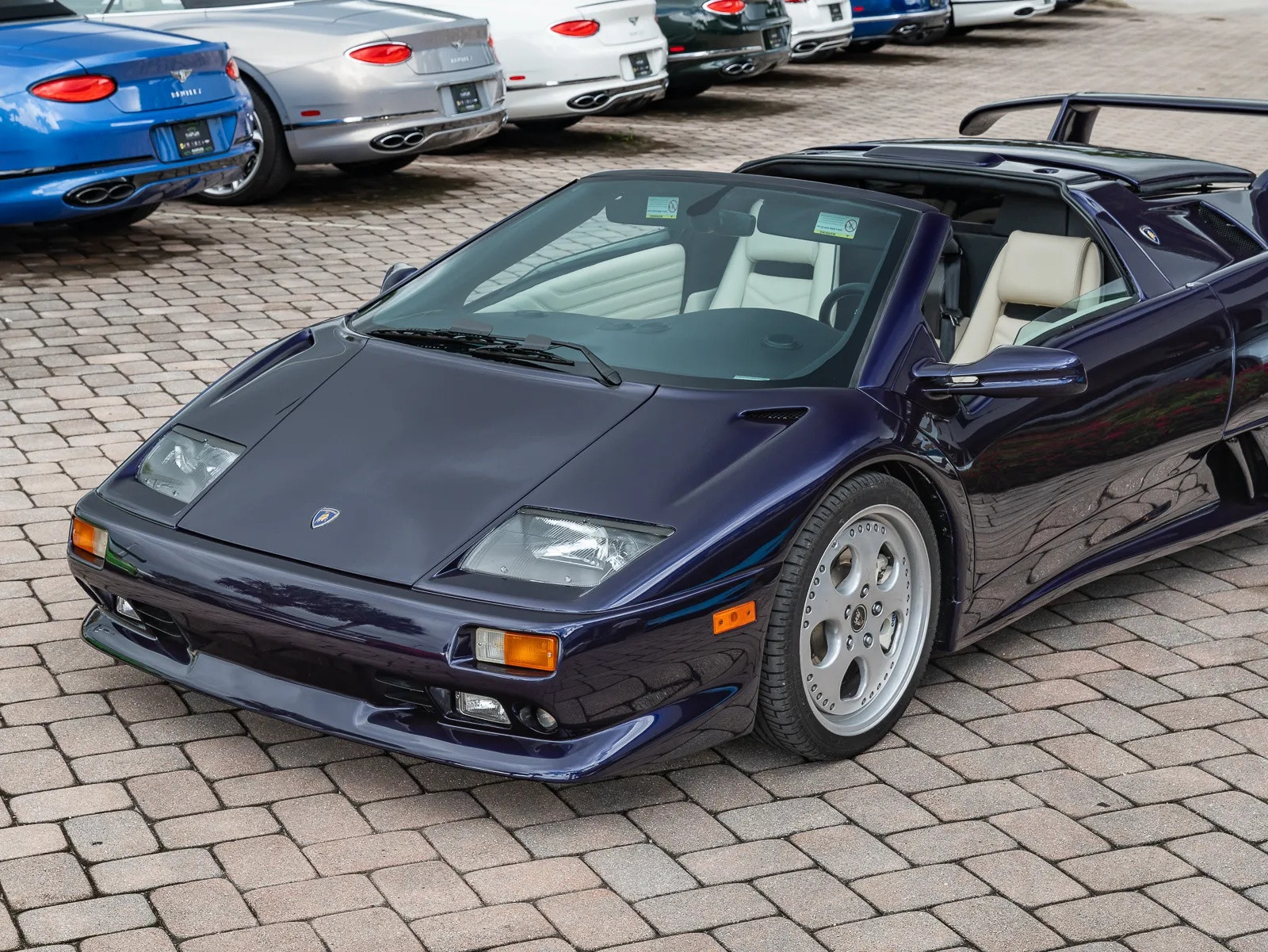 Side view of the blue Lamborghini Diablo replica showcasing its convertible top
Side view of the blue Lamborghini Diablo replica showcasing its convertible top
This revelation sheds light on the foundation of Cena’s replica. NAERC was known for providing kits and plans for exotic car replicas, utilizing custom-built chassis designed to accommodate powerful engines like BMW’s V12. This explains the unique combination of Lamborghini aesthetics and BMW engineering at the heart of this project.
Beneath the Hood: A BMW V12 Heart
The choice of a BMW V12 engine is a defining characteristic of this Lamborghini Diablo replica. The listing details the engine as a “1988 BMW 750 V12,” likely referring to the engine from a BMW 750i or 750iL. In its original configuration, this engine would have produced around 300 horsepower and 332 pound-feet of torque.
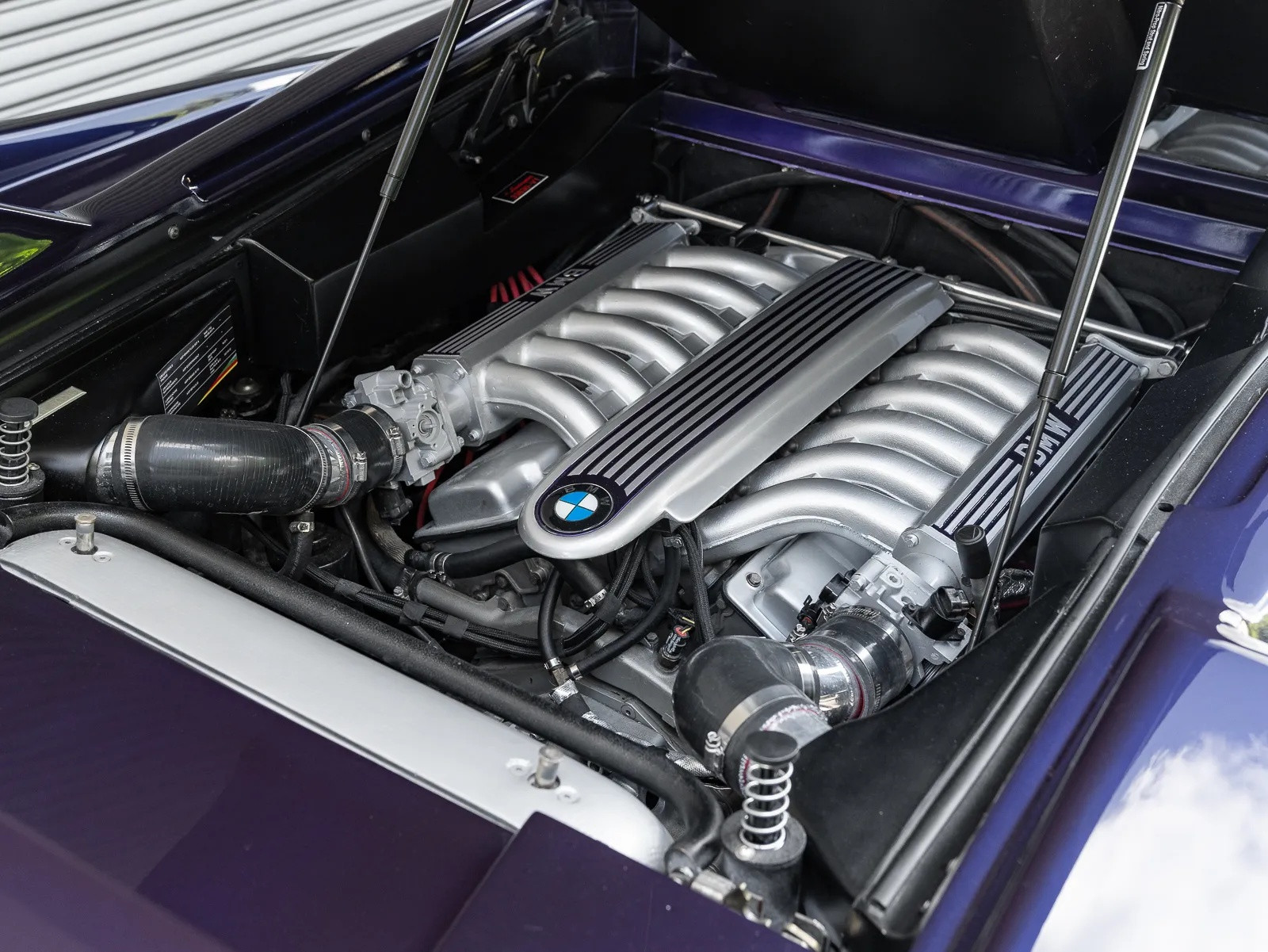 BMW V12 engine inside the Lamborghini Diablo replica
BMW V12 engine inside the Lamborghini Diablo replica
However, this isn’t a straightforward engine swap. The BMW V12 is integrated into a custom vehicle with modifications like custom exhaust components and a FuelTech ECU. While the seller believes the engine to be largely stock in terms of internal components and power output, the aftermarket ECU suggests potential for tuning and performance adjustments. Without dyno documentation, the engine’s precise output remains an open question, adding an element of mystery for potential buyers. The build book included in the sale will be crucial for future maintenance, detailing the specifics of this unique powertrain setup.
Parts Bin Engineering: A Symphony of Components
Beyond the BMW V12, the John Cena “fake Lambo” showcases a fascinating blend of components sourced from various manufacturers. This “parts bin engineering” is typical of kit car builds, requiring creativity and resourcefulness to bring disparate elements together into a cohesive whole.
The transmission, for instance, comes from a Porsche 944 Turbo (also known as the 951). Shift cables are borrowed from an Audi 5000. Steering and braking systems are sourced from American muscle cars, with a power steering rack and pump from a 2000 Chevrolet Camaro and brakes from a C5 Corvette. Even the air conditioning system is a universal Vintage Air Gen IV kit, demonstrating the truly custom nature of this build.
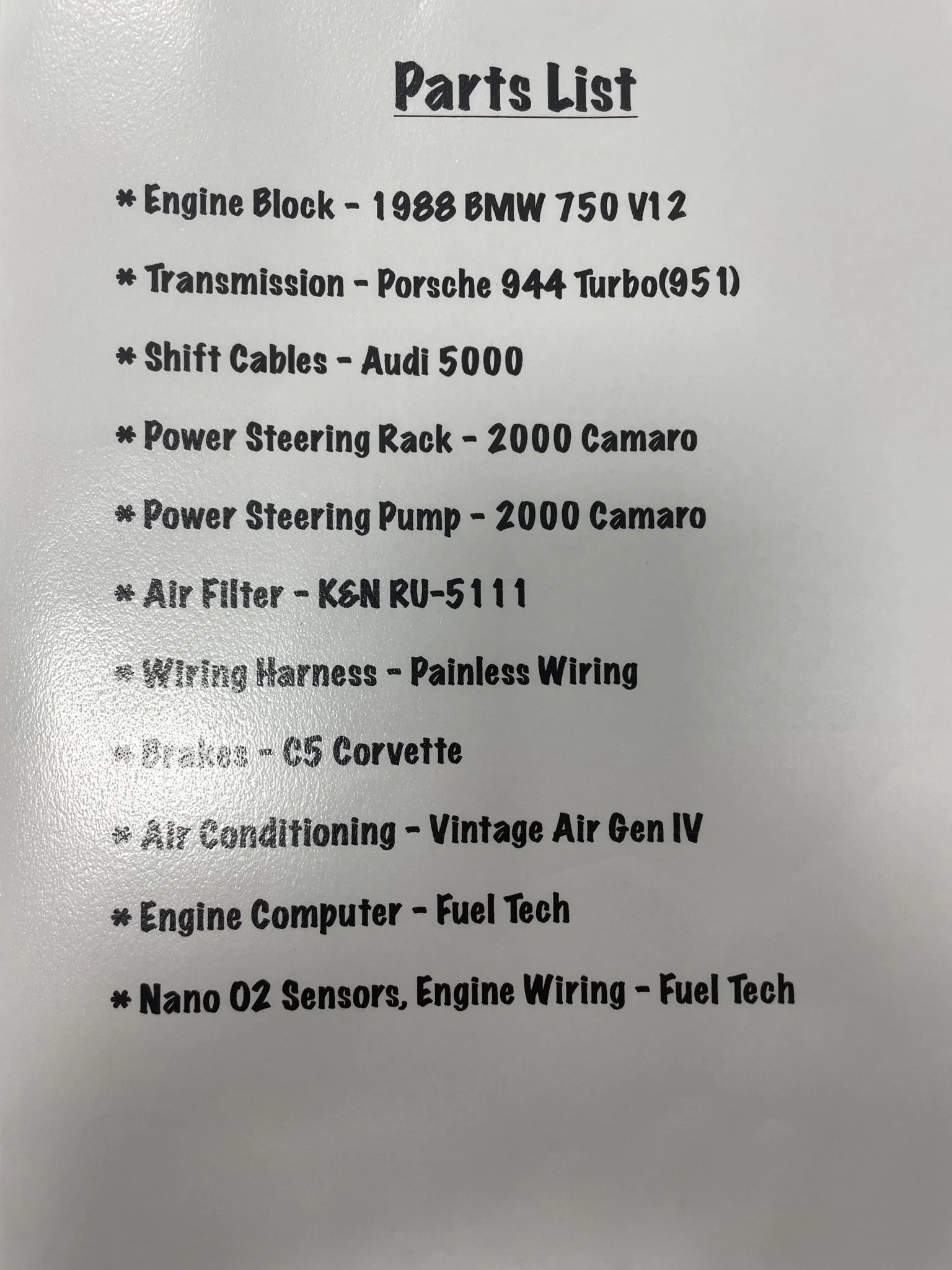 Close up of the build book detailing parts used in the Lamborghini Diablo replica
Close up of the build book detailing parts used in the Lamborghini Diablo replica
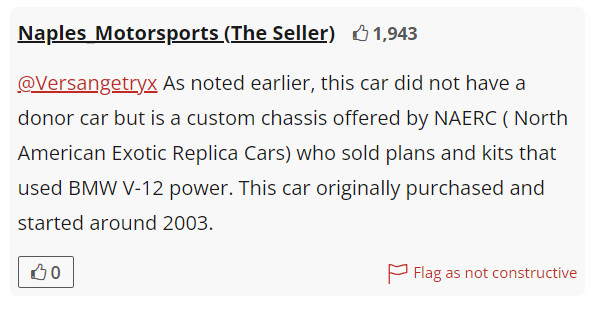 Screenshot from the listing confirming NAERC chassis
Screenshot from the listing confirming NAERC chassis
This eclectic mix of parts highlights both the ingenuity and the compromises inherent in kit car construction. While utilizing readily available and potentially more affordable components, it also necessitates careful integration and potential custom fabrication to ensure everything works harmoniously.
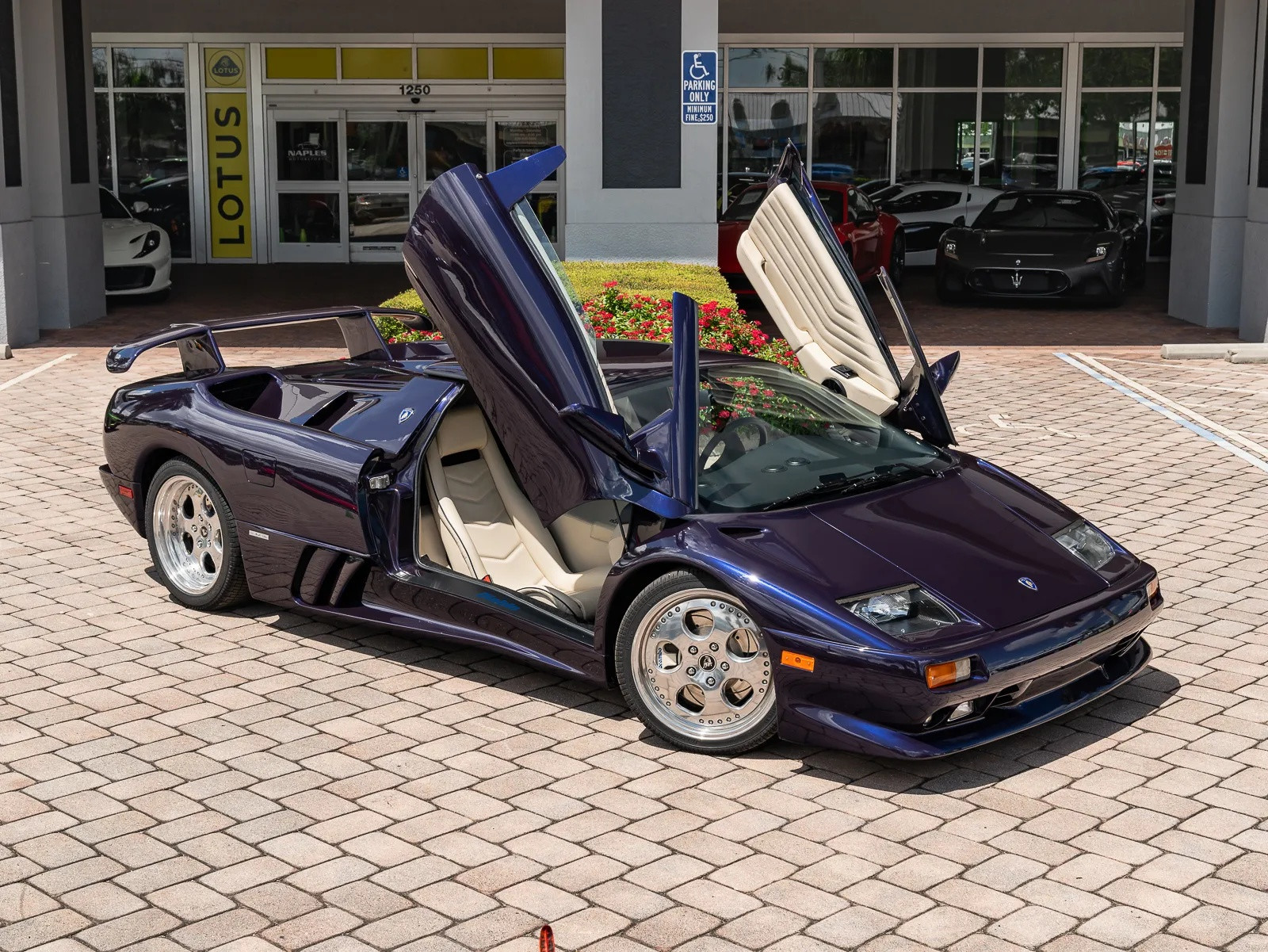 Front three-quarter view of the blue Lamborghini Diablo replica
Front three-quarter view of the blue Lamborghini Diablo replica
 Rear view of the blue Lamborghini Diablo replica showcasing taillights and exhaust
Rear view of the blue Lamborghini Diablo replica showcasing taillights and exhaust
Kit Car Quirks: GPS Speedometer and Hidden Controls
Being a kit car, John Cena’s “fake Lambo” exhibits some characteristic quirks that differentiate it from a factory-built Lamborghini. One notable example is the speedometer system. Instead of relying on a traditional sensor connected to the transmission, this replica uses a GPS-based speedometer from VDO. While functional, this setup has limitations, such as potential signal loss in tunnels and a slight delay in acquiring a GPS lock upon startup.
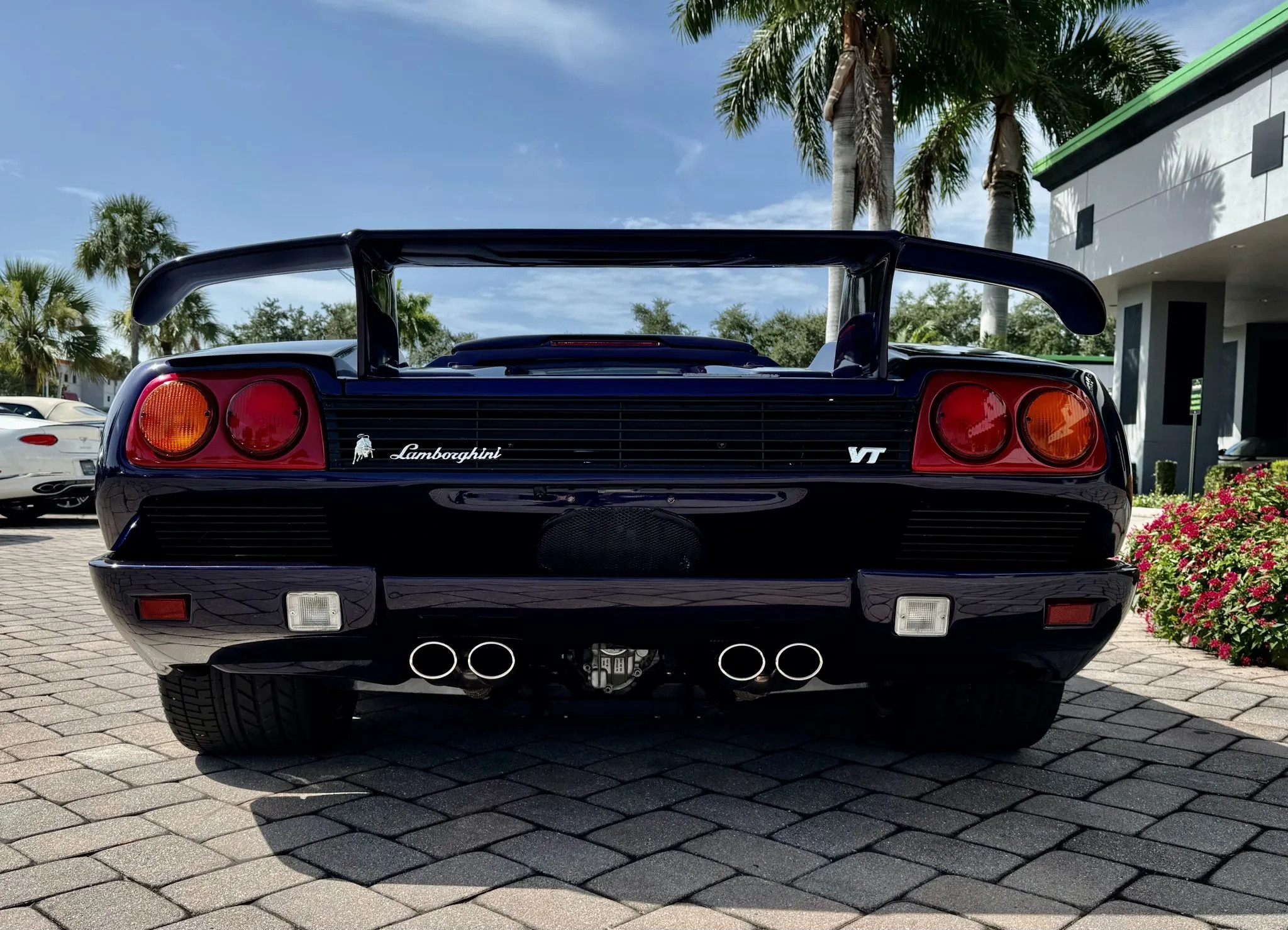 Interior shot showing dashboard and steering wheel of the Lamborghini Diablo replica
Interior shot showing dashboard and steering wheel of the Lamborghini Diablo replica
The interior also reveals some budget-conscious choices. A JoyBring touchscreen stereo, a brand known for its affordability rather than high-end features, is present in the dash. Similarly, the Vintage Air HVAC controls, while functional, are somewhat awkwardly concealed behind a plastic panel, hinting at the challenges of seamlessly integrating aftermarket components into a replica interior.
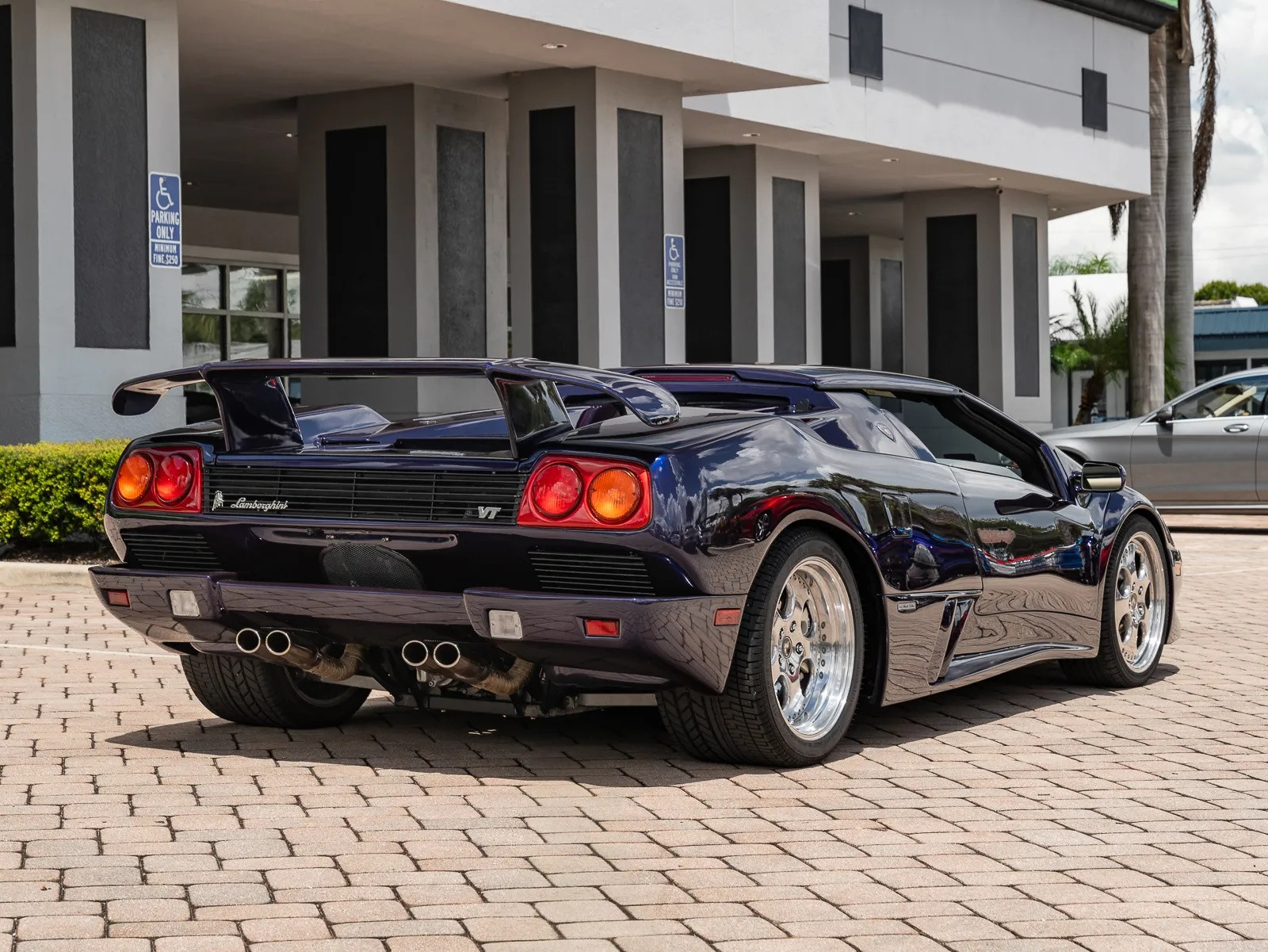 Close up of the front wheel and brake caliper of the Lamborghini Diablo replica
Close up of the front wheel and brake caliper of the Lamborghini Diablo replica
 Close up of the rear wheel and exhaust of the Lamborghini Diablo replica
Close up of the rear wheel and exhaust of the Lamborghini Diablo replica
These quirks are not necessarily flaws, but rather reflections of the pragmatic approach often taken in kit car builds. They underscore the difference between a meticulously crafted replica and the genuine article, appealing to buyers who appreciate the unique character and resourceful engineering inherent in such projects.
Seller’s Perspective: Driving Experience and Potential Cena Signature
Naples Motorsports, the seller of John Cena’s Lamborghini Diablo replica, addresses potential concerns about build quality directly in the listing description. They acknowledge the car’s long and multi-shop build history but emphasize that the final assembly was completed by a highly skilled individual, in Cena’s words, “an absolute genius.”
The seller also highlights the positive driving experience, stating, “I was surprised to see how nice the car handled and felt overall. I did really enjoy the short time in the car.” This firsthand account suggests that despite its replica nature, the car offers a rewarding driving experience.
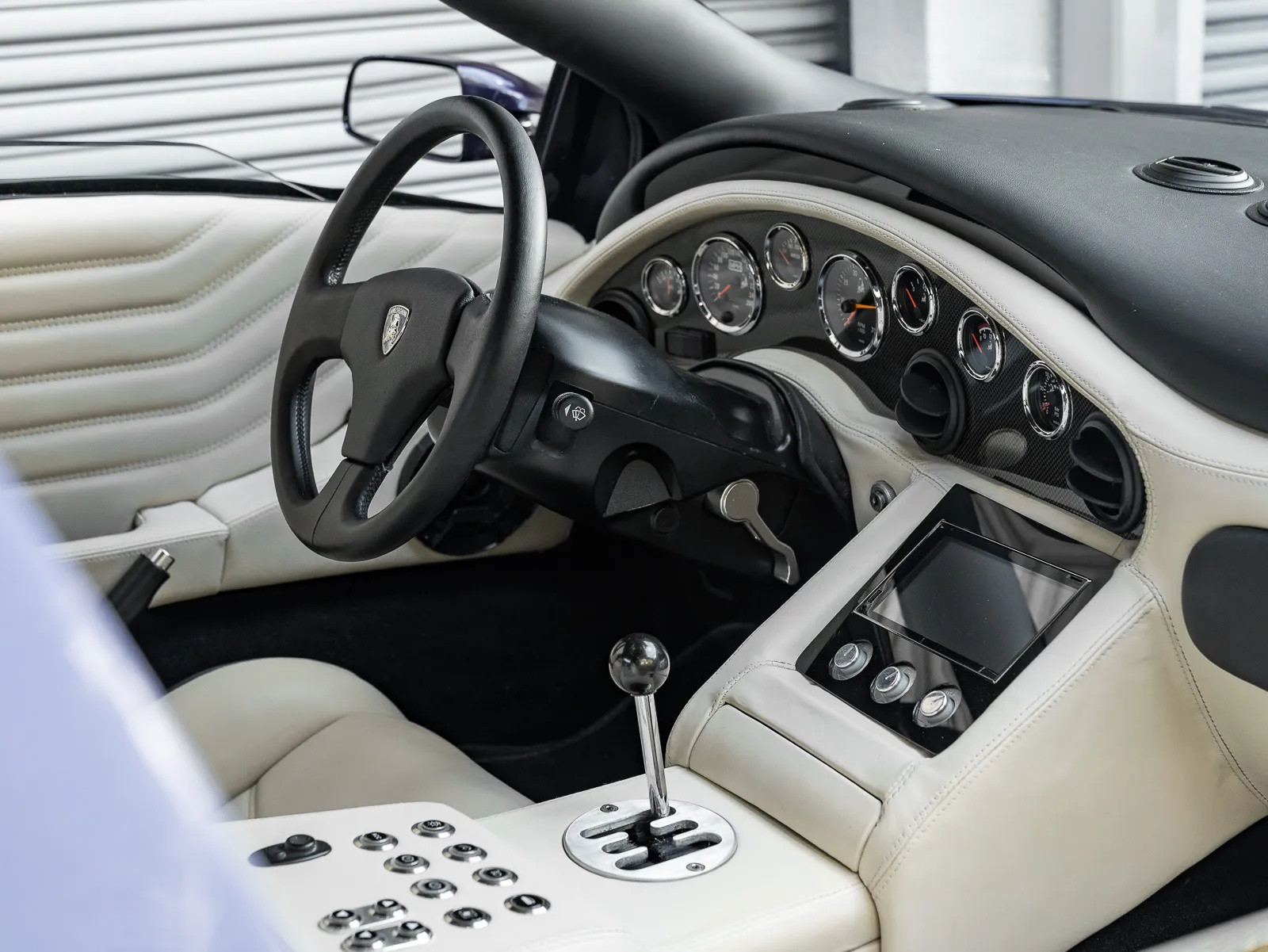 Close up of the gauge cluster with chrome rings in the Lamborghini Diablo replica
Close up of the gauge cluster with chrome rings in the Lamborghini Diablo replica
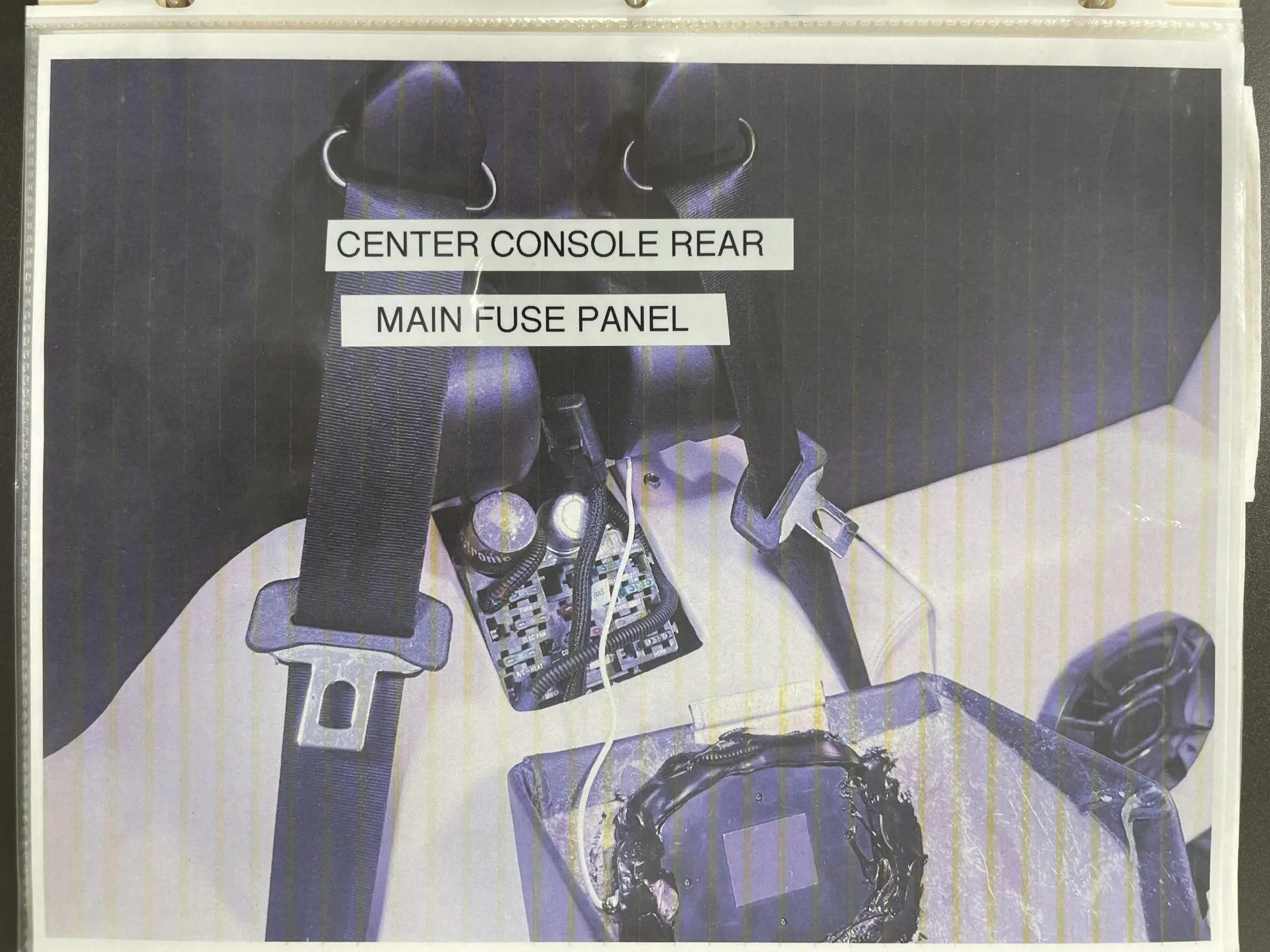 Exterior detail shot of the Lamborghini Diablo replica
Exterior detail shot of the Lamborghini Diablo replica
Adding another layer of appeal, the seller mentions the “might” be possibility of John Cena signing the car, potentially increasing its value for fans and collectors. This celebrity connection further distinguishes this replica from other kit cars and adds a unique selling point.
 Close up of the GPS speedometer in the Lamborghini Diablo replica
Close up of the GPS speedometer in the Lamborghini Diablo replica
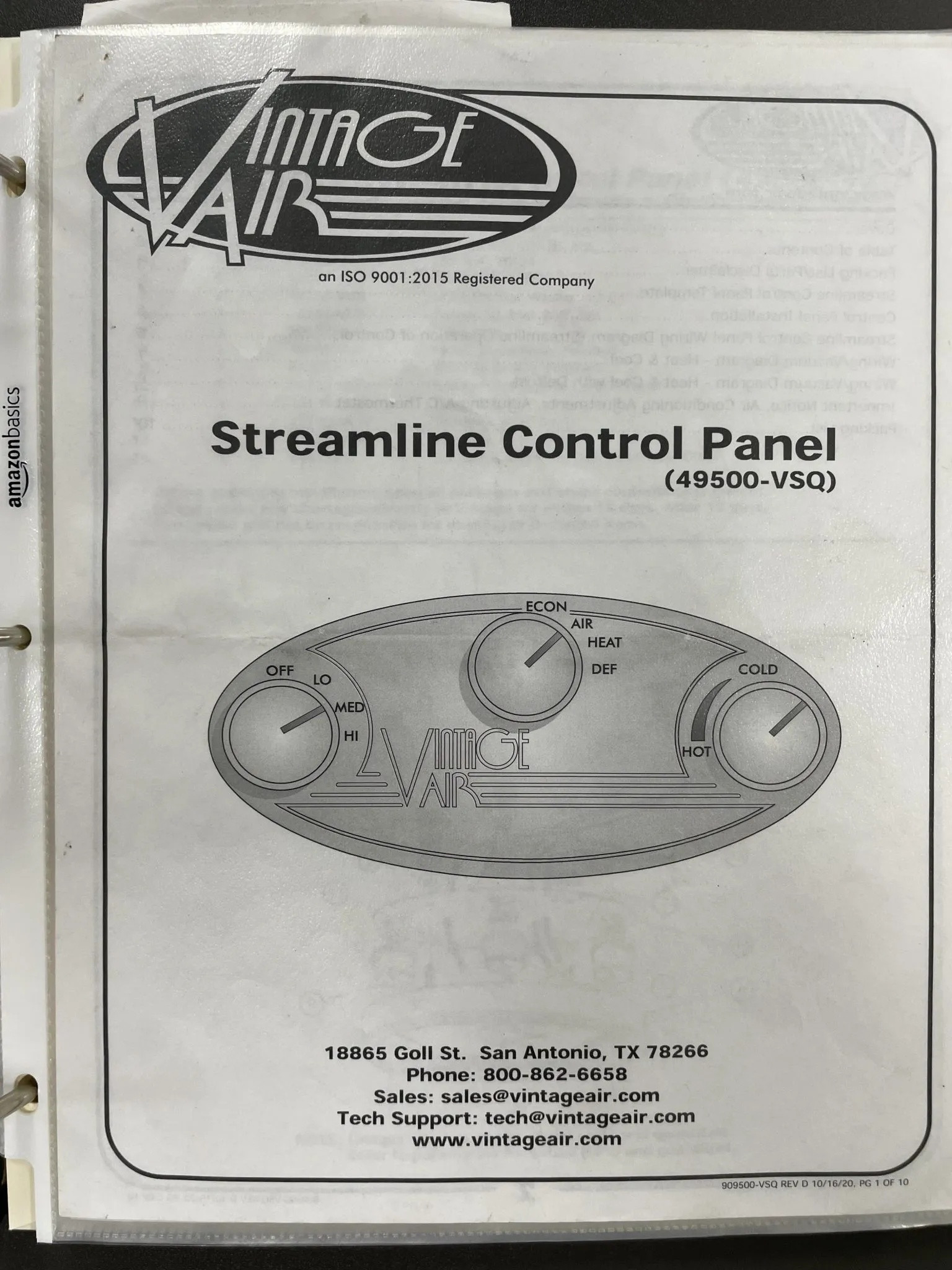 Close up of the hidden HVAC controls in the Lamborghini Diablo replica
Close up of the hidden HVAC controls in the Lamborghini Diablo replica
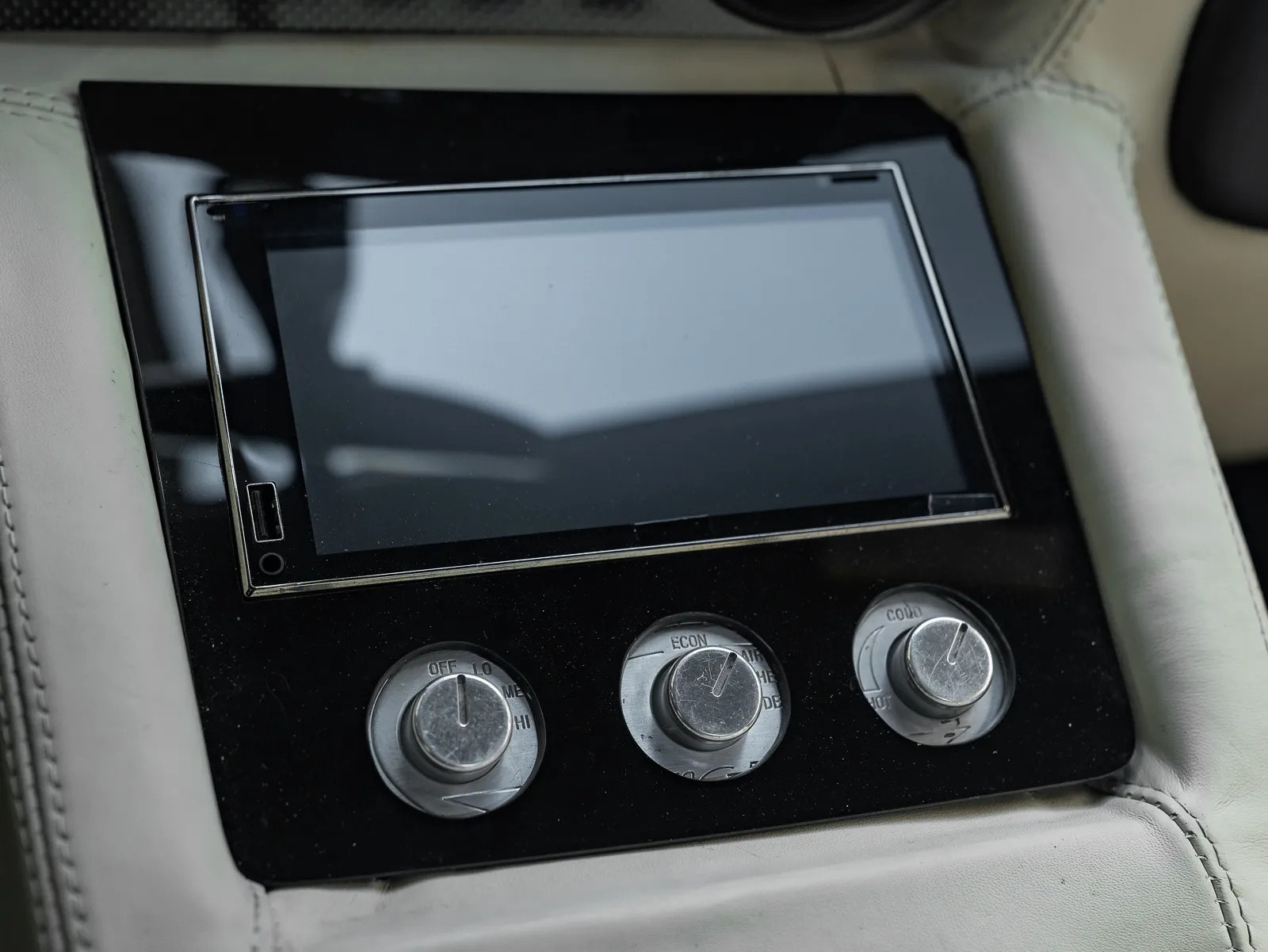 Interior shot showing the plastic panel hiding HVAC controls in the Lamborghini Diablo replica
Interior shot showing the plastic panel hiding HVAC controls in the Lamborghini Diablo replica
Market Value and the Reality of Replicas
As of the writing of the original article, bidding for John Cena’s Lamborghini Diablo replica stood at $76,000. While the final sale price remains to be seen, it’s clear that this “fake Lambo” will command a significant sum. However, it will undoubtedly fall short of the price of a genuine Lamborghini Diablo, which, according to Classic Driver, starts in the mid-$300,000 range.
This price difference highlights the fundamental distinction between a replica and an original. While a high-quality replica can capture the look and feel of an exotic car, it will never possess the provenance, exclusivity, and investment value of the real deal. The value of Cena’s replica lies in its unique story, its blend of performance and resourcefulness, and its celebrity connection, rather than pure Lamborghini authenticity.
Bonus Replica: Cena’s Jaguar XJ13
Interestingly, John Cena’s automotive tastes extend beyond Lamborghini replicas. Naples Motorsports is also offering another replica from his collection: a Jaguar XJ13 built by Predator Performance. This Jaguar replica, finished in British Racing Green, presents an intriguing contrast to the Diablo. It embodies a different kind of automotive passion, focusing on classic racing heritage and understated elegance.
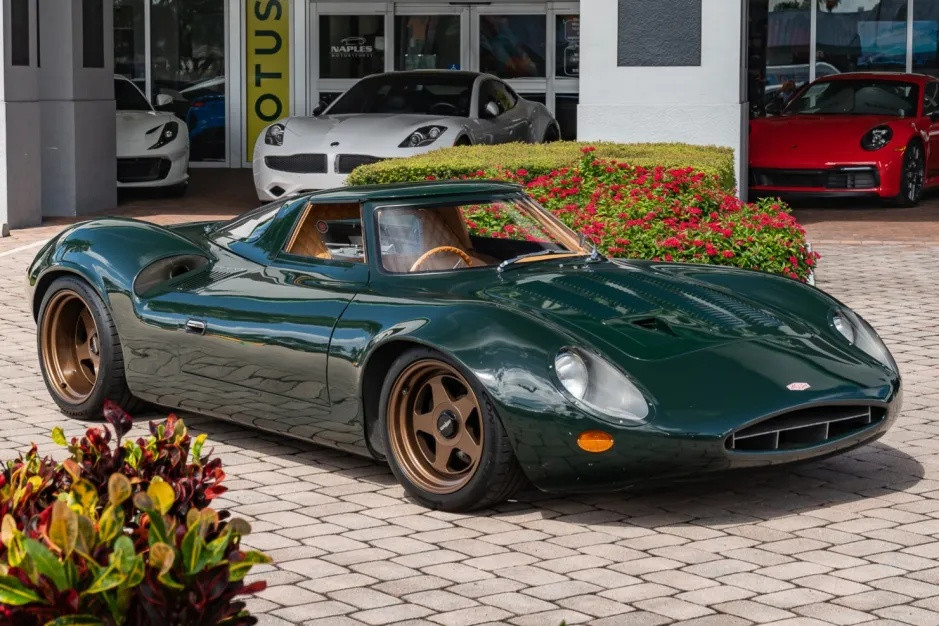 British Racing Green Jaguar XJ13 replica
British Racing Green Jaguar XJ13 replica
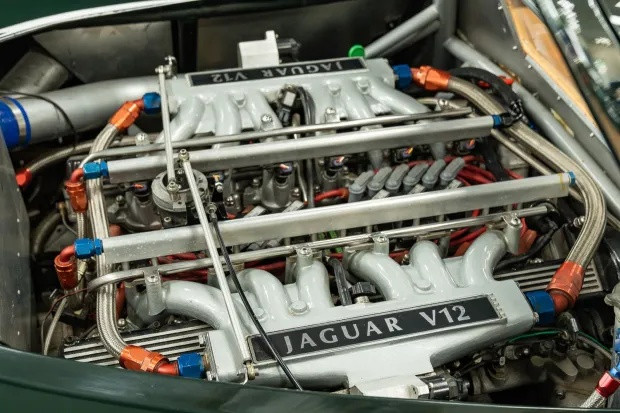 Engine bay of the Jaguar XJ13 replica with red and blue fittings
Engine bay of the Jaguar XJ13 replica with red and blue fittings
With bidding also in the $80,000 range, the Jaguar XJ13 replica showcases the appeal of high-quality replicas across different marques and styles. The fact that Cena owns both a Lamborghini Diablo and a Jaguar XJ13 replica suggests a deep appreciation for automotive design and engineering, regardless of originality.
Conclusion: The Kit Car Lesson
John Cena’s “fake Lambo” saga serves as a valuable lesson for aspiring kit car builders. Even with celebrity resources, completing a kit car project can be a long, expensive, and challenging endeavor. Cena’s twenty-year journey underscores the commitment and perseverance required to bring such a vision to fruition.
His decision to sell the Diablo replica immediately after completion is also telling. It suggests that perhaps the satisfaction lies in the build process itself, or that even for a car enthusiast like Cena, the practicalities of owning a highly custom, somewhat quirky kit car might outweigh its novelty.
For those contemplating their own kit car project, Cena’s experience offers a cautionary tale and a dose of realism. It highlights the potential pitfalls and the importance of careful planning, realistic expectations, and a healthy dose of patience. But it also showcases the unique rewards of creating a personalized, eye-catching machine that, while not “real” in the conventional sense, is undeniably cool and full of character.
Image credits: Bring a Trailer (story); Good Morning America/Youtube (top graphic)


